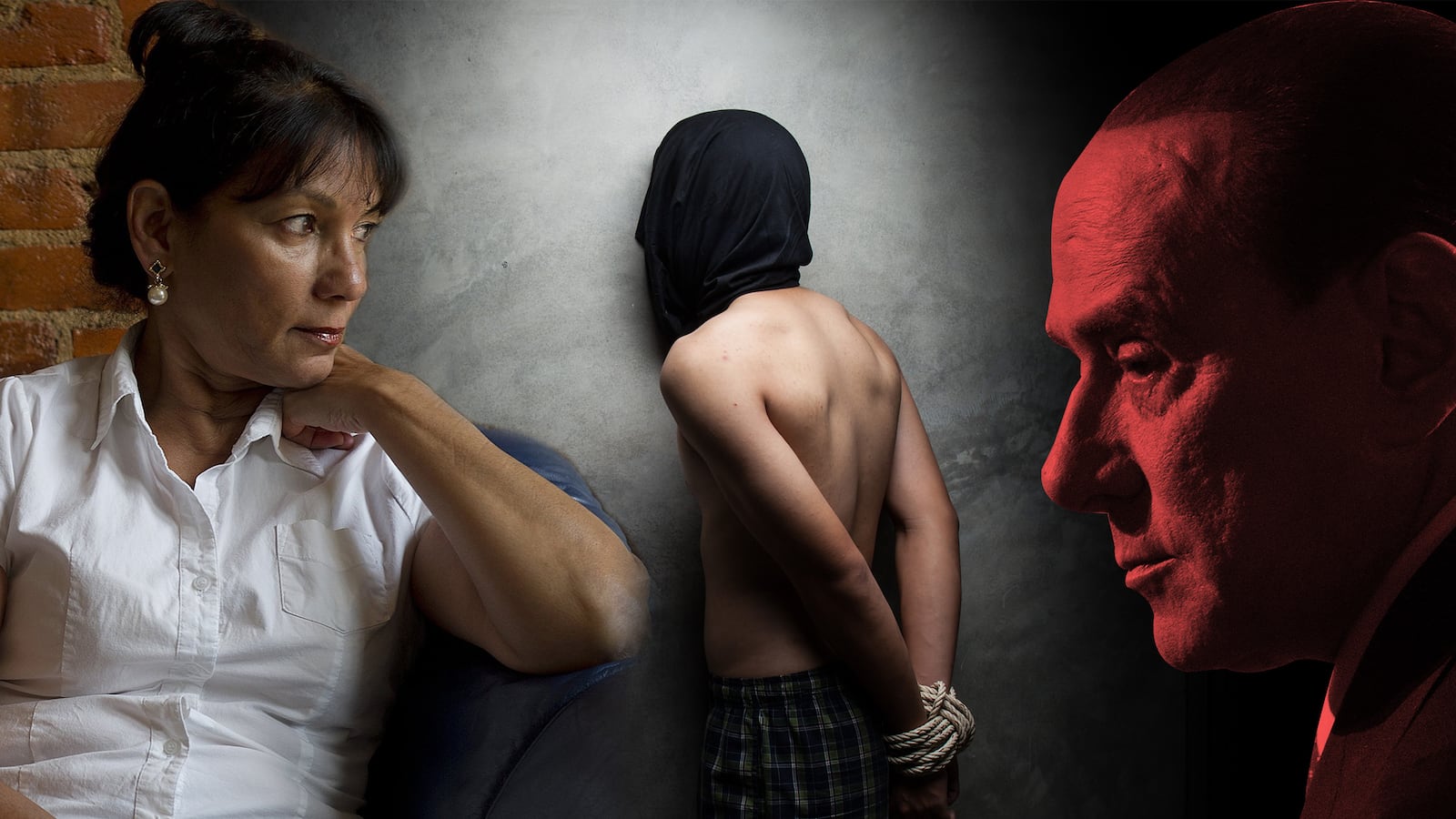ROME — Former CIA employee Sabrina De Sousa, now fighting extradition from Portugal to Italy, was skiing on a mountainside far away from the action, on Feb. 17, 2003, when Hassan Mustafa Osama Nasr was snatched off a street in Milan on his way to the mosque. The cleric, known as Abu Omar, was first flown by executive jet to Germany and then to Cairo, where he was tortured for nearly seven months, according to his own testimony and Amnesty International accounts.
The kidnap was part of the infamous “extraordinary rendition” program being run at the time by the United States. The CIA was grabbing suspected terrorists from all over the world and shipping them to various countries, including Bashar al-Assad’s Syria, Muammar Gaddafi’s Libya, and Hosni Mubarak’s Egypt, to suffer the tortures of the damned and in some cases execution.
Begun under President Bill Clinton, the rendition program developed with a vengeance under President George W. Bush after the Sept. 11 terrorist attacks in America. And Abu Omar’s kidnapping took place only weeks before the U.S.-led invasion of Iraq, when the Bush administration was anxious to prove some link between Iraqi dictator Saddam Hussein and the 9/11 attacks. (None existed.)
Abu Omar was believed to have funneled jihadists into the ranks of Abu Musab al-Zarqawi, who was then operating out of northern Iraq and later founded the organization Al Qaeda in Iraq, that evolved into the so-called Islamic State. Italian authorities, backed by the CIA, believed he was plotting to blow up a busload of American students who attended an international high school in Milan.
Whether out of urgency, arrogance, or incompetence, Abu Omar’s CIA kidnappers acted like the gang that couldn’t shoot straight. The team, which included at least 18 people, believed the Italian secret services under Prime Minister Silvio Berlusconi had signed off on the operation. But the police and the courts hadn’t. A woman witnessing the snatch had told authorities and, most damning of all, Abu Omar got out of his Egyptian prison after many months in hell, called his wife in Milan and told her what had happened. Since her phone was bugged, that went into the records of the investigating magistrates, and everything started to unravel. (In the video here, from 2007, Italian investigative reporter Carlo Bonini talks about the damage the case did not only to the CIA, but to the Italian intelligence service SISMI.)
In fact, there had been extensive cooperation between Rome and Langley. Two Italian agents initially were convicted for their role, although those convictions were later overturned under a stipulation that protected their actions as “state secrets.” Other officials were forced to resign in disgrace.
In a stunning example of poor-to-nonexistent tradecraft, the kidnapping team had left a trail of phone calls, hotel records, and other clues that let Italian investigators pull together a phenomenally detailed picture of their activities as the CIA operatives stayed in Milan’s best hotels, feted the birthday of a younger woman on the team at a beach resort, then scattered to more first-class hotels, including the Danieli in Venice, after the deed was done.
But the one thing the kidnap team didn’t leave behind was a list of their legal names. So, virtually the only people the court was able to identify definitively were those in the military (which handled the flight out), those working under diplomatic cover in Rome, including then-CIA station chief Jeffrey Castelli, and those in Milan, including the senior officer there, Robert Seldon Lady, and, yes, Sabrina De Sousa.
Unfortunately for Lady and De Sousa, it turned out diplomatic cover for an operative at a consulate, even those given diplomatic passports, is not the same as diplomatic immunity from prosecution.
Lady was convicted in absentia, lost his house in Italy, saw his marriage fall apart, and retired to Panama only to be picked up and held there, briefly, on an international warrant, as The Wall Street Journal reported in detail in 2013.
Meanwhile, De Sousa’s ironclad alibi the day of the snatch didn’t stop Italian courts from convicting her as well, along with the 18 agents with fake names who actually carried out the operation.
At the time of the kidnapping, De Sousa reportedly was working as a multi-lingual interpreter, and the Italian court claimed that she was instrumental in finalizing the arrangements for Abu Omar’s torture in Egypt. She was already in the United States in 2004 when the criminal case against her began.
The convictions of all the Americans were upheld by Italy’s highest court in 2012, although no one has ever served a day in prison for the crime. Nor has anyone yet paid Abu Omar €1 million ($1.13 million) and his wife half that sum for their suffering, as ordered by the Italian courts.
Paradoxically, the Italian criminal court eventually convicted Abu Omar on terrorist conspiracy charges from before his abduction, but that trial, too, was conducted in absentia. He was released from prison in Egypt, is reportedly still living there, and nobody expects he will be extradited.
The case has caused tensions between Italy and the United States over the years. In 2015, Italy’s President Sergio Mattarella pardoned two of the operatives, Castelli and the commander of the U.S. Air Force unit that flew Abu Omar out of Italy, and shortened the sentence of Lady ahead of Mattarella’s state visit to Washington. He also pardoned the Italian agents involved in the case. And, perhaps more importantly, Italy has never pushed for the extradition from the United States of any of the American operatives, a fact seen as a compromise gesture.
So, why now for De Sousa?
In 2015, De Sousa, a naturalized American who was born in India and who has a Portuguese passport (her family is from the former Portuguese colony of Goa), defied warnings by the U.S. State Department not to travel to Europe, where she could be picked up on a European arrest warrant and sent to Italy to serve the prison term.
It’s not like De Sousa didn’t know the risk. Indeed, in 2009 after the Italian conviction she filed a lawsuit against the U.S. Central Intelligence Agency, former Rome station chief Castelli, her former boss Robert Seldon Lady, the State Department, and then-Secretary of State Hillary Rodham Clinton, alleging that they had failed to protect a loyal public servant.
De Sousa told us in 2009 she was “saddened, dismayed, and angered that the government I served abandoned me completely and I am being punished for conduct I did not do.”
With her then-attorney, Mark S. Zaid, she built the case around what Zaid called “the U.S. government’s betrayal of our diplomatic and military representatives overseas.”
In 2012, the U.S. District Court in the District of Columbia dismissed the suit on various grounds, but concluded, “The facts underlying this case are troubling in many ways. The plaintiff served the government and the people of the United States in the Foreign Services for a decade.” (At that point, De Sousa did not acknowledge publicly her CIA employment. Now it’s part of her bio on Twitter.
“During the course of her service to this country,” the court went on in 2012, “she was accused and convicted in absentia of committing a crime in a foreign nation, not for any personal gain, but at the alleged behest of the United States government.
“Following her foreign conviction,” as the court noted four years ago, “she faces the risk of arrest and imprisonment if she travels outside the United States, which is a particular hardship in her case both because of the impact on her professional options and because she is a naturalized citizen with family members living abroad.”
Indeed.
We do not know exactly why De Sousa chose to tempt fate—or the Europol warrant for her arrest—at this time. She did not respond to our efforts to contact her. But there may be some element of calculation here.
“Honestly, I don’t understand what she is doing or thinks she will accomplish,” says one associate sympathetic to her case. “But it’s her life.”
So it was that in October of last year, De Sousa was detained at the Lisbon airport after spending time with relatives in Portugal, as she prepared to fly to Goa to see her mother. Her U.S. and Portuguese passports were seized (neither one, at this point, was a diplomatic passport, it seems). She was detained for several hours and then released, but she was prohibited from leaving Portugal.
In the meantime, Italy reluctantly followed through with the request for extradition as stipulated on the European arrest warrant. A source close to the Italian president’s office told The Daily Beast that they had never actively sought extradition, but couldn’t avoid it if one of the convicted operatives was “dumb enough to travel to Europe.”
De Sousa petitioned the Portuguese courts to deny extradition to Italy. They declined that request last week, paving the way for her extradition to Italy, which could take place as early as May 4, according to her Italian lawyer, Dario Bolognesi, who told The Daily Beast that they were “in talks” with Mattarella’s office to try to win her a pardon or commute her sentence.
When reached by phone, the chief prosecutor in the case, Armando Spataro, declined to comment on whether or not she would have to serve her full four-year sentence or if she would be allowed to have a new trial, as her Italian lawyer suggests should happen.
Although the publicity surrounding her case now labels her a participant in a truly infamous CIA operation, ironically, this may be the only way she can clear her name.







